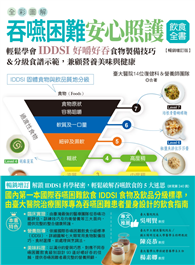| FindBook |
有 1 項符合
Thermal Stress and Strain in Microelectronics Packaging的圖書 |
 |
Thermal Stress and Strain in Microelectronics Packaging 出版日期:2012-04-30 |
| 圖書館借閱 |
| 國家圖書館 | 全國圖書書目資訊網 | 國立公共資訊圖書館 | 電子書服務平台 | MetaCat 跨館整合查詢 |
| 臺北市立圖書館 | 新北市立圖書館 | 基隆市公共圖書館 | 桃園市立圖書館 | 新竹縣公共圖書館 |
| 苗栗縣立圖書館 | 臺中市立圖書館 | 彰化縣公共圖書館 | 南投縣文化局 | 雲林縣公共圖書館 |
| 嘉義縣圖書館 | 臺南市立圖書館 | 高雄市立圖書館 | 屏東縣公共圖書館 | 宜蘭縣公共圖書館 |
| 花蓮縣文化局 | 臺東縣文化處 |
|
|
Microelectronics packaging and interconnection have experienced exciting growth stimulated by the recognition that systems, not just silicon, provide the solution to evolving applications. In order to have a high density/ performance/yield/quality/reliability, low cost, and light weight system, a more precise understanding of the system behavior is required. Mechanical and thermal phenomena are among the least understood and most complex of the many phenomena encountered in microelectronics packaging systems and are found on the critical path of neatly every design and process in the electronics industry. The last decade has witnessed an explosive growth in the research and development efforts devoted to determining the mechanical and thermal behaviors of microelectronics packaging. With the advance of very large scale integration technologies, thousands to tens of thousands of devices can be fabricated on a silicon chip. At the same time, demands to further reduce packaging signal delay and increase packaging density between communicat ing circuits have led to the use of very high power dissipation single-chip modules and multi-chip modules. The result of these developments has been a rapid growth in module level heat flux within the personal, workstation, midrange, mainframe, and super computers. Thus, thermal (temperature, stress, and strain) management is vital for microelectronics packaging designs and analyses. How to determine the temperature distribution in the elec tronics components and systems is outside the scope of this book, which focuses on the determination of stress and strain distributions in the electronics packaging.
Survival Gardening: Grow Your Own Food When You Need It the Most
International Floral Art 2024-2025
Music Inspires Ikebana
Texas Home Landscaping Including Oklahoma, 4th Edition: 48 Landscape Designs with 200+ Plants & Flowers for Your Region
Gleanings From The Garden: Lessons learned in the garden about life and the Lord
The Urban Hydroponic Blueprint: Sustainable Gardening for Small Spaces
Soil Science For Urban Gardeners: The ABCs of Growing Bloomy Plants in Containers, Raised Beds, and Limited Spaces in All Seasons for Healthy Living.:
Designed Forests: A Cultural History
Designed Forests: A Cultural History
|











